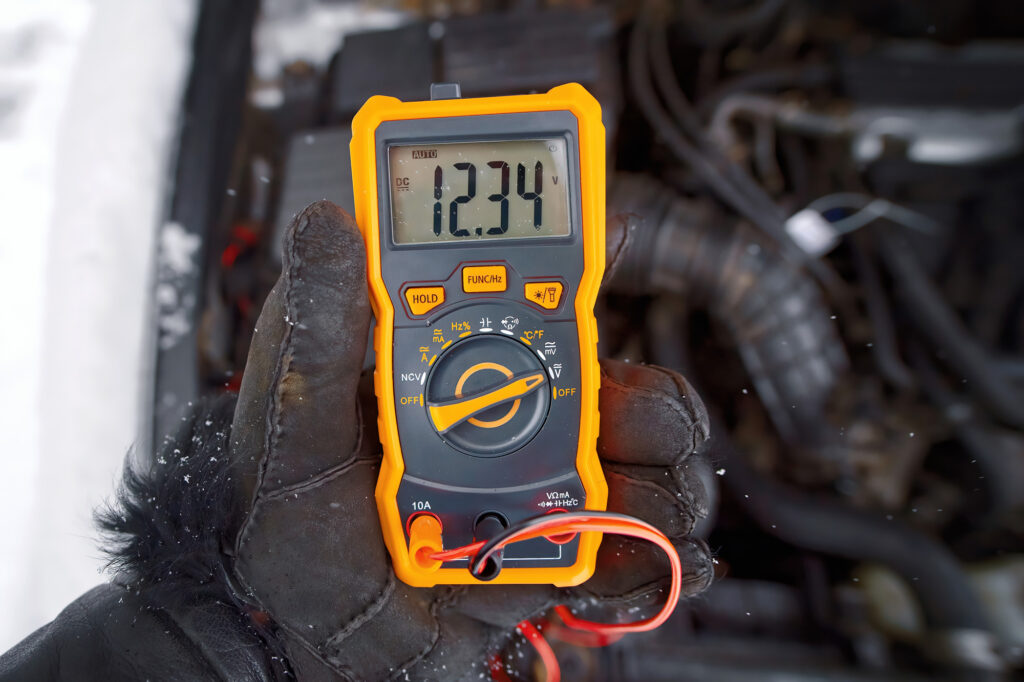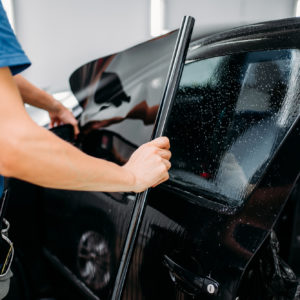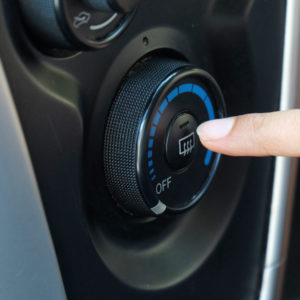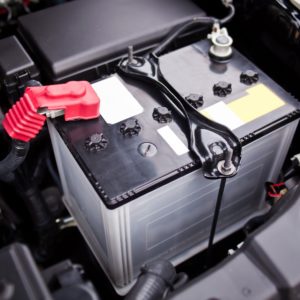Heated front and rear windshields make driving during winter possible and eliminate the need for ice scrapers and de-icer sprays. A simple push of a button can instantly give you a clear view of the road when the windshield is obstructed with fog, ice, or snow.
But how exactly do they work?
The Science Behind Heated Car Windows
On more modern vehicles equipped with an electrically heated windshield you might notice curvy lines running along the base of the wipers. Meanwhile, a grid can be seen from the rear windshield. These are actually tungsten wires that help warm up the glass to melt ice or snow.
In most vehicles, this heating feature can be activated by pushing a button near or on the dashboard.
When activated, the tungsten wires will warm up to melt the ice or snow on the window. The increase in temperature is subtle and won’t make the glass hot to the touch.
The required temperature for the wires can be as low as 33.8℉ or anything above the freezing point of water. The window heater (or defogger system) will essentially self-regulate the electrical current requirements to match the need for defogging.

As the temperature decreases, grid resistance also decreases. Meanwhile, current flow increases, helping the windows warm up.
Once the temperature on the glass increases, grid resistance also increases while the current flow drops.
Aside from the driver-operated switch, a timer relay also controls the window heater.
In most cases, the defogger will only run for 10 minutes to avoid straining the battery and charging system.
If the windshield remains unclear after that period, the driver can turn the defogger on again. However, the timer relay will only permit current to flow through the grid for a maximum of five minutes.
Brief History of Heated Car Windows
Some cars in the ‘60s and ‘70s (like Chrysler New Yorkers) were equipped with a rear heater core and a rear defroster fan and ductwork. Coolant hoses travel through the car to carry hot water to the rear heater core.
Note that front windshield glass is different from all the other glass on a vehicle because it’s designed to withstand the impact of birds and rocks and other objects. There are two thin layers of glass with a clear rubbery material between them that form the front windshield.
All other automotive glass panels besides the windshield are designed to shatter into small cubes to prevent sharp shards of glass from causing injury during accidents. Front windshields, with the rubberized core, don’t release shards of glass even when they break.
Back in 1986, the heated windshield was a $250 option on Ford Taurus and Mercury Sable. Ford sandwiched a nearly invisible mesh of silver and zinc-oxide wires between the two sheets of glass that make up the windshield so that when power is applied, these wires would heat up and clear the windshield within a couple of minutes.
The vehicles equipped with the heated windshield also featured a 100 amp alternator to carry the extra load of the heated windshield at a time when most cars had 60 amp alternators.

Problems with Heated Windows
Like other vehicle components, heated windows aren’t indestructible. In most cases, the defogger won’t work because of a blown fuse, a broken or chafed wire, or a faulty switch, among others.
The heating element or the tungsten wires can also get damaged over time (usually due to careless cleaning or scraping), affecting the system’s overall operation. On cars where the owner throws items on the package tray (the shelf under the back glass), the windshield heating grid can be damaged since it’s on the inside surface of the glass.
Sometimes the electrical bus connection that is soldered to the grid can come off and will need to be re-soldered, which is incredibly difficult for a person who hasn’t done anything like this before.
There are some instances where window grid repair can be done using a special epoxy-based, electrically conductive material (Ford has a bottle of metallic/liquid compound that looks like fingernail polish for this kind of repair). But if the damaged grid length is greater than approximately 1.5 inches, the window glass might need to be replaced.
In some vehicles that use the same wire grid of the rear windshield as the radio antenna, radio reception might be affected if the grid gets damaged.
Another factor that could cause the defogging system to malfunction would be corroded wires at the ground connection. If minimal corrosion is spotted, the problem can be resolved by cleaning the wire and covering it with a layer of vaseline.
For some (not all) hatchback vehicles, electric current flows through sprung metal contacts in the rear compartment and tailgate door.
On these type contacts, they can accumulate dirt and the springs can wear out or get pitted, affecting the defogger system’s operation.
Diagnosing a Faulty Defogger System
The easiest way to check your defogger system for issues is by conducting a breath test. This can be an ideal way to diagnose the system when there’s no fog, ice, or snow.
Exhaling on the outside of the window glass produces a temporary fog that the defogger should be able to get rid of once it’s been activated.

The other method might be more suitable for those with advanced technical knowledge in automotive repair.
A test light or voltmeter can be used to check for grid voltage. If there’s none, check the switch and relay timer assembly for voltage instead.
The voltage reading should decrease as the probe is moved from the power side to the ground side.
Replacing Heated Windows
Generally, heated windshields are more expensive than non-heated ones. The cost of regular windshields can range from $200 to $400, depending on factors like your vehicle’s year, make, and model, as well as the special features the replacement windshield has. Expect to pay over $500 for a heated window replacement.
Tracing the Roots of Heated Windows
Contrary to popular belief, the development of heated windows didn’t start in the automotive industry. Heated windshields were first used on aircraft in the 1940s, and they were made of pyrolytic coatings.
In the 1970s, Ford adapted the idea of heated windshields and integrated it into the Thunderbird. The model featured Ford’s Quick Defrost Function which could clear a windshield five times faster than conventional glass.
The Quick Defrost Function didn’t come with any visible heating wires. Instead, it featured a thin, gold-bearing metallic film wedged between several polyvinyl butyral and glass layers.
A separate alternator served as the film’s power source, clearing frosted windows in as fast as three minutes.
Unfortunately, the Quick Defrost Function had several issues that led to its demise一replacement screens were expensive and hard to find, and the function became unreliable when it wasn’t used on a regular basis.
Ford revived the concept during the 1980s with the Granada Scorpio, Taurus, Sable, and Continental sporting the improved heated windshield called “Insta-Clear.”
Insta-Clear technology made use of silver and zinc-oxide wires placed between two sheets of glass.
The heating function was able to remove 1/10 in. of frost at 0℉ within two to three minutes. Ford technically didn’t own the patent to this technology, but the manufacturer did trademark the Quickclear name in Europe, which is still used today.
The screen used for Insta-Clear was produced by Pilkington donning the Triplex name, as seen on early advertisements.
Find Reliable Windshields and Rear Window Glass For Your Car
Aside from keeping frost off the windshield and rear window glass, you must ensure they stay intact and undamaged. If either window glass fractures, it’s best to stop driving your car until you replace the fractured part. Fortunately, ordering replacement windshields and rear window glass that fit your car is a breeze here at CarParts.com.
At CarParts.com, we streamline the search process for replacement auto parts like windshields and rear window glass that fit your vehicle. Plug your car’s important info into our website’s built-in vehicle selector, and you’ll find the products in our catalog of parts and accessories that match your requirements. Furthermore, you only need several mouse clicks or screen taps to order what you want through our secure shopping process. If you live in the continental US and send your order before noon ET, you can get your new windshields and rear window glass in several business days.
Get new car window glass from CarParts.com delivered to your doorstep. Check out our selection of high-quality windshields and rear window glass today.
Any information provided on this Website is for informational purposes only and is not intended to replace consultation with a professional mechanic. The accuracy and timeliness of the information may change from the time of publication.






























